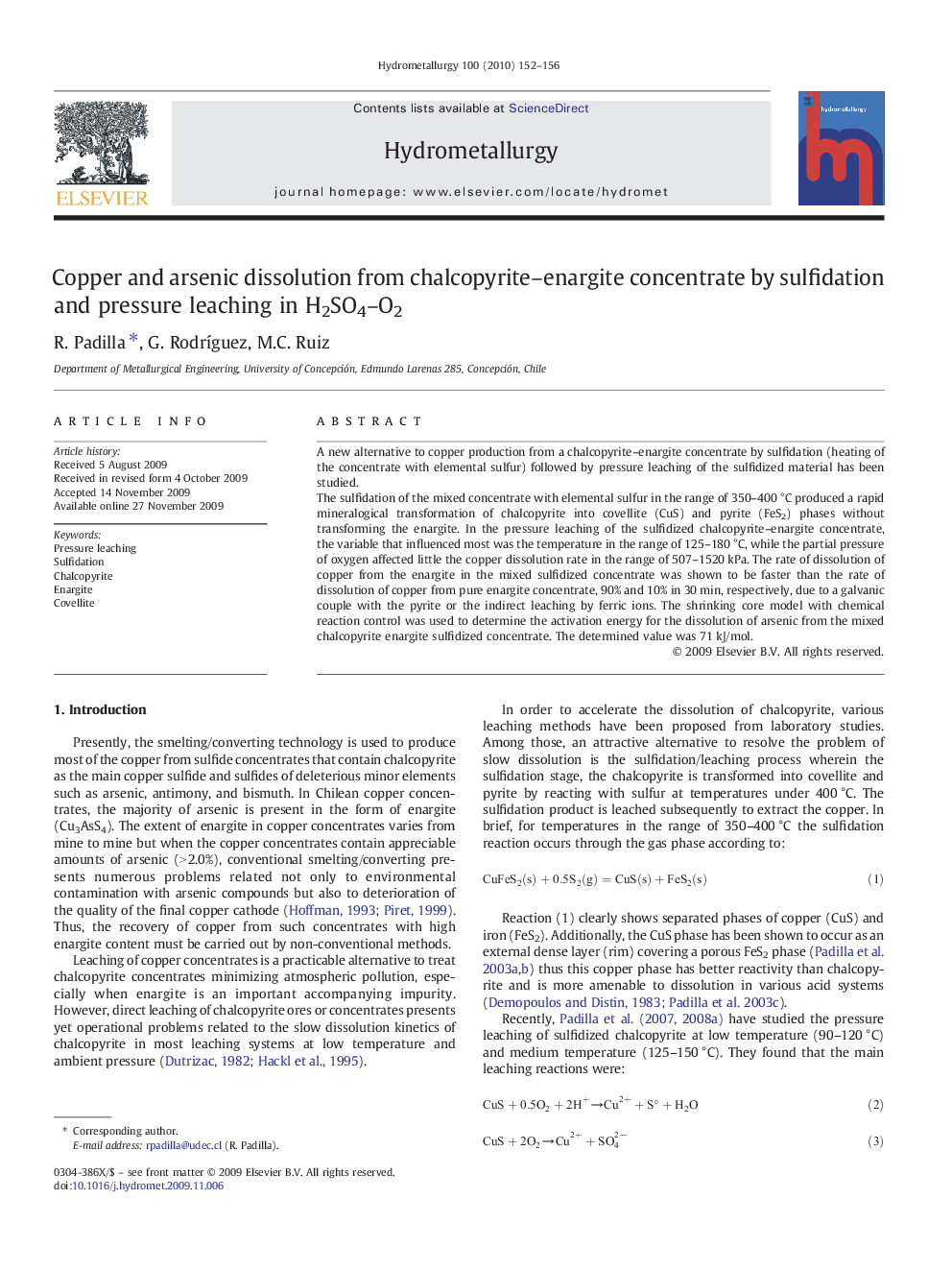| Article ID | Journal | Published Year | Pages | File Type |
|---|---|---|---|---|
| 212879 | Hydrometallurgy | 2010 | 5 Pages |
A new alternative to copper production from a chalcopyrite–enargite concentrate by sulfidation (heating of the concentrate with elemental sulfur) followed by pressure leaching of the sulfidized material has been studied.The sulfidation of the mixed concentrate with elemental sulfur in the range of 350–400 °C produced a rapid mineralogical transformation of chalcopyrite into covellite (CuS) and pyrite (FeS2) phases without transforming the enargite. In the pressure leaching of the sulfidized chalcopyrite–enargite concentrate, the variable that influenced most was the temperature in the range of 125–180 °C, while the partial pressure of oxygen affected little the copper dissolution rate in the range of 507–1520 kPa. The rate of dissolution of copper from the enargite in the mixed sulfidized concentrate was shown to be faster than the rate of dissolution of copper from pure enargite concentrate, 90% and 10% in 30 min, respectively, due to a galvanic couple with the pyrite or the indirect leaching by ferric ions. The shrinking core model with chemical reaction control was used to determine the activation energy for the dissolution of arsenic from the mixed chalcopyrite enargite sulfidized concentrate. The determined value was 71 kJ/mol.
